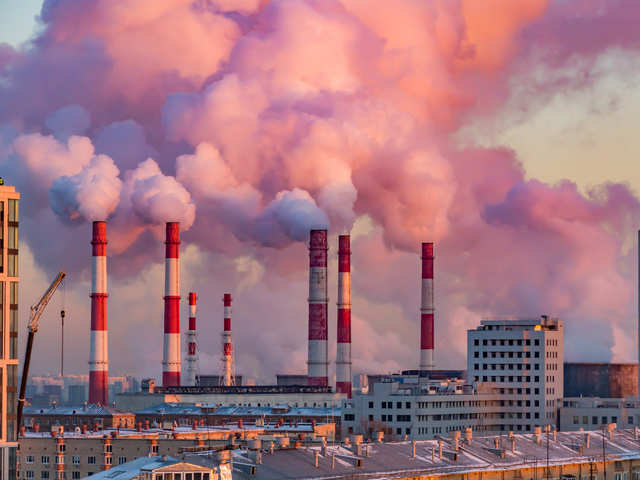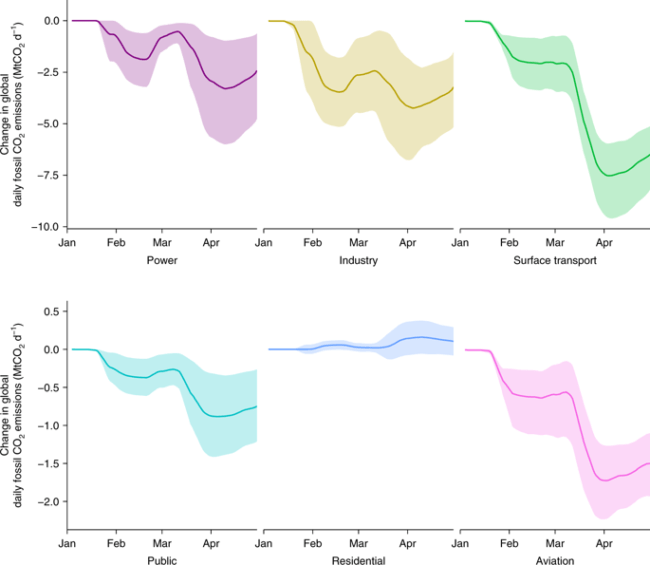
I’ve recently touched upon this topic. Not too long ago (April 28th) I was writing about how the oft quoted statistic of the COVID-19 lockdown would result in a 5% drop in CO2 was wrong. At the time I advised “Take that 5% number with a pinch of salt, there are too many variables and unknowns to cling to it with a high degree of confidence“.
We have an update.
Nature Climate Change – Temporary reduction in daily global CO2emissions during the COVID-19 forced confinement
Published May 21st this new paper estimates the decrease in CO2 emissions during forced confinements.
What does their analysis reveal?
Daily global CO2 emissions decreased by –17% (–11 to –25% for ±1σ) by early April 2020 compared with the mean 2019 levels, just under half from changes in surface transport. At their peak, emissions in individual countries decreased by –26% on average.
Annual emissions is still simply a finger in the air guess.
The impact on 2020 annual emissions depends on the duration of the confinement, with a low estimate of –4% (–2 to –7%) if prepandemic conditions return by mid-June, and a high estimate of –7% (–3 to –13%) if some restrictions remain worldwide until the end of 2020. Government actions and economic incentives postcrisis will likely influence the global CO2 emissions path for decades.
What exactly has happened?
The decline is for the rather obvious reasons. If we are not flying or driving, then our CO2 emissions fall. Here is how they estimate that all breaks down by sector showing that the biggest dips are exactly as expected (planes, trains, and cars) …

The Real Question – What do we do now?
This is not simply me reading something into the study. The study authors themselves are asking this very question. Within an article that they have published in The Conversation at the same time and Titled “Coronavirus is a ‘sliding doors’ moment. What we do now could change Earth’s trajectory“, they open it as follows …
The numbers of people cycling and walking in public spaces during COVID-19 has skyrocketed. Cities from Bogota to Berlin and Vancouver have expanded bike lanes and public paths to accommodate the extra cycling traffic. In Australia, the New South Wales government is encouraging councils to follow suit.
Mandatory social distancing under COVID-19 is disrupting the way we live and work, creating new lifestyle patterns. But once the crisis is over, will – and should – the picture return to normal?
So the point they are making is basically this …
We can rapidly return to the old “normal”, and the emissions pathway will follow suit. But if we choose otherwise, 2020 could be the unsolicited jolt that turns the global emissions trend around.
Their article is long and detailed (and well worth a read). The sentence above however is perhaps the most important question we now have in the face of what is perhaps the greatest threat our species has ever faced – climate change.
CO2 and Lockdown – Further Reading
- Nature Climate Change (May 21 2020) – Temporary reduction in daily global CO2emissions during the COVID-19 forced confinement
- Scientific American – Global CO2 Emissions Saw Record Drop During Pandemic Lockdown
- The Conversation (written by the study authors) – Coronavirus is a ‘sliding doors’ moment. What we do now could change Earth’s trajectory
